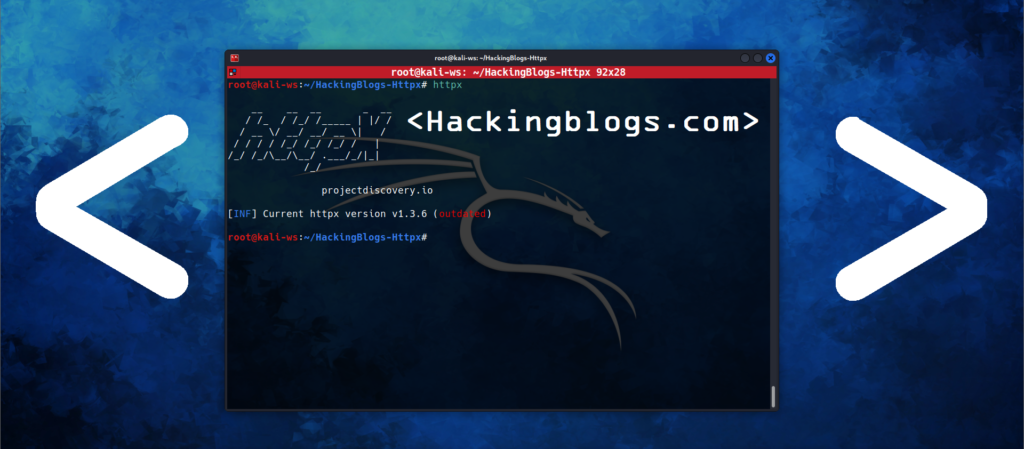What tools are definitely necessary for someone who is deeply involved in hacking, I’ve been wondering. The best part? All of these tools have been used by me personally.
Now, this is a Know The Tools guide, so don’t believe a deep dive or a comprehensive “how-to-use” tutorial. However, you can be sure that I will be writing separate pieces for each of these bad boys if this article becomes really popular. But for the time being, we’re keeping things straightforward so you can quickly understand what they are, why you need them, and how to utilize them.
However, before you get started, I would like to know what is the ONE tool you use religiously. Leave a comment! and let’s work out together. 👾

NOTE : CLICK ON THE TOOL’S LOGO TO GET THROUGH THE TOOLS SOURCE
Reconnaissance & Scanners
These tools are similar to using digital X-ray vision while you’re looking for juicy targets. Everything will be made public, including servers, open ports, subdomains, and more.
Masscan

The quickest Internet port scanner is called Masscan. In just a few minutes, it can scan the entire Internet. It can test via TCP, SCTP, and UDP protocols and quickly scan vast address spaces. While Masscan functions similarly to Nmap, it uses asynchronous scanning to maximize performance and drastically cut down on scanning time. It is therefore perfect for extensive reconnaissance operations.
Sublist3r

A quick subdomain enumeration tool called Sublist3r helps penetration testers in finding website subdomains. It effectively lists subdomains using a range of search engines, DNS queries, and other methods. Sublist3r assists in compiling an extensive list of subdomains that may be exploited further by utilizing API keys and services such as Google, Bing, and others.
Nmap

Nmap is an open-source program made for security audits and network discovery. A network map can be made by using it to find hosts and services on a computer network. Nmap can identify OS systems and service versions and supports a number of scanning methods, including TCP Connect, SYN Scan, and UDP Scan. Nmap is one of the most widely used tools for penetration testing because of its versatility and sophisticated features.
Recon-ng

Recon-ng is a feature-rich reconnaissance framework created to offer a strong setting for fast and comprehensive open source web-based reconnaissance.The learning curve for using the Metasploit Framework is lowered by Recon-ng’s closeness in appearance and feel. But it is very different. Since recon-ng is only meant for web-based open source reconnaissance, it is not meant to compete with current frameworks.
Sn1per

For penetration testers and security experts, Sn1per is an open-source reconnaissance and vulnerability detection tool. It simplifies the process of scanning networks, locating vulnerabilities, and finding possible attack routes by automating a large number of the first tasks of a penetration test. With features that range from simple enumeration to comprehensive exploitation testing, the tool is modular. Its smooth execution in a broader testing workflow is made possible by its good integration with other tools.
Exploitation Frameworks
Metasploit

An effective tool for creating and running exploit code against a distant target computer is the Metasploit Framework. It offers a stable setting for testing, vulnerability exploitation, and system access. With the use of Metasploit’s many exploit modules, payloads, auxiliary modules, and post-exploitation features, penetration testers may automate complex attacks. One of the most popular tools for finding vulnerabilities and carrying out penetration testing in cybersecurity is this one.
Hydra

Hydra is a parallelized login cracker that works with many different protocols, including HTTP, FTP, SSH, and others. Brute-forcing authentication methods make extensive use of it. Because Hydra is so adaptable, you can set up attack methods including brute force, dictionary-based attacks, and hybrid mixtures of the two. Because of this, it’s a useful tool for evaluating how strong authentication methods are.
Sqlmap

An open-source penetration testing tool called Sqlmap makes it easier to find and take advantage of SQL injection vulnerabilities in web applications. Multiple database management systems, including MySQL, PostgreSQL, Oracle, and MSSQL, are supported by the program. It offers a wide range of tools for testing and taking advantage of SQL injection vulnerabilities, including as data retrieval, automatic database fingerprinting, and even the ability to run arbitrary commands.
Web Penetration Testing
Burp Suite

One of the best toolkits for assessing the security of online applications is Burp Suite. It has a vulnerability scanner, an intercepting proxy, and a number of other modules for both automatic and manual testing. By analyzing HTTP(S) requests, doing vulnerability scans, and taking advantage of common web application vulnerabilities like XSS and SQLi, Burp Suite enables testers to conduct comprehensive testing.
OWASP ZAP

A free and open-source web application security scanner called OWASP ZAP (Zed Attack Proxy) is made to find security flaws in online applications. It offers a variety of tools for both automatic and manual testing, including fuzzing, intercepting proxies, and active and passive scanners. ZAP is a fantastic substitute for Burp Suite and is appropriate for both novice and expert users.
Gobuster

Gobuster is a tool for brute-forcing directories, files, DNS subdomains, and URLs. It is made in Go and is intended to quickly and effectively locate hidden endpoints in DNS subdomains or web servers. Gobuster is flexible for penetration testers working in a web environment because it supports directory/file, DNS, and virtual host brute-forcing.
Waybackurls

URLs are extracted from the web.archive.org archive by this utility. This is excellent for locating long-forgotten endpoints or hidden routes.
Password Cracking & Authentication
Hashcat

A well-known password cracking tool called Hashcat uses GPU power to break password hashes more quickly than traditional CPU-based techniques. It can execute attacks utilizing dictionaries, rule-based attacks, and combinatorial assaults in addition to supporting a wide variety of hashing algorithms, such as MD5, SHA, and bcrypt. Because of its exceptional ability to break complicated passwords, hashcat is a vital tool for security experts and ethical hackers.
John the Ripper

An open-source password cracking program called John the Ripper is made to identify weak passwords. Numerous cryptographic hash methods, such as DES, MD5, SHA, and others, are supported by it. John the Ripper is adaptable and works with a range of attack techniques, including brute-force and dictionary attacks. It is a vital tool for penetration testers and security researchers because of its capacity to decipher encrypted password hashes.
OSINT (Open Source Intelligence)
Sherlock

Sherlock is a well-liked tool for finding usernames on a large number of social media sites. To find out if a particular username is accessible or already taken, this application quickly searches more than 300 websites. It’s crucial for personal reconnaissance, OSINT investigations, and obtaining information on a target’s internet activity.
SpiderFoot

An OSINT automation program called SpiderFoot collects publicly accessible data, including emails, domain names, IP addresses, and other details about a target. By automating the process of gathering OSINT, the tool enables penetration testers to learn more about the network, infrastructure, and digital footprint of a target.
theHarvester

An open-source reconnaissance program for listing email addresses is called TheHarvester. By gathering email addresses from multiple sources, including websites, search engines, and social media platforms, it assists attackers in identifying possible targets.
Post-Exploitation & Privilege Escalation
PEASS-ng

A powerful post-exploitation tool for privilege escalation on Linux and Windows systems is called PEASS-ng. It contains a range of scripts for locating configuration errors, potential exploits, and ways for privilege escalation. PEASS-ng is very useful in post-exploitation stages since it is necessary to obtain more privileges in a compromised environment.
PowerSploit

A well-liked open-source PowerShell post-exploitation framework for Windows penetration testing and red teaming is called PowerSploit. It was created by Joseph Bialek and offers a collection of modules that let penetration testers and security researchers carry out a number of tasks, including privilege escalation, credential harvesting, and lateral movement.
Networking & MITM (Man-in-the-Middle)
Wireshark

An open-source and free network protocol analyzer is called Wireshark. Network debugging, troubleshooting, and security auditing are among its frequent uses. By capturing and displaying data packets sent over a network, Wireshark enables users to examine and comprehend device-to-device interactions.
CrackMapExec

An all-purpose tool for pentesting Windows and Active Directory environments is this package. From listing all logged-on users and spidering SMB shares to carrying out psexec-style attacks, utilizing Powershell to automatically inject Mimikatz/Shellcode/DLLs into memory, dumping the NTDS.dit, and more.
King Phisher

King Phisher is a tool that mimics actual phishing attempts in order to test and raise user awareness. Its user-friendly yet incredibly adaptable design gives you complete control over emails and server content. From straightforward awareness training to more complex scenarios where user-aware information is delivered to harvest credentials, King Phisher can be utilized to run campaigns.
Extra Tools
Naabu

The ProjectDiscovery team created Naabu, a quick and portable port scanner, as a more effective substitute for more conventional programs like Nmap. It is a great option for extensive network reconnaissance since it concentrates on quick port scanning and can manage many IPs and ports at once.
Subfinder

Subfinder is a quick and effective subdomain enumeration tool that assists security researchers and penetration testers in finding subdomains associated with a specific domain. To find subdomains, it makes use of a range of open-source intelligence (OSINT) sources, such as search engines and DNS providers. Subfinder helps map out attack surfaces on the internet, which makes it very helpful in the early phases of a penetration test.
BloodHound

An effective tool for mapping and examining Active Directory (AD) relationships and permissions inside a network is BloodHound. In a Windows environment, it aids penetration testers in locating attack vectors and privilege escalation routes. By visualizing the connections between AD users, groups, and permissions, BloodHound facilitates the exploitation of configuration errors and privilege elevation.


